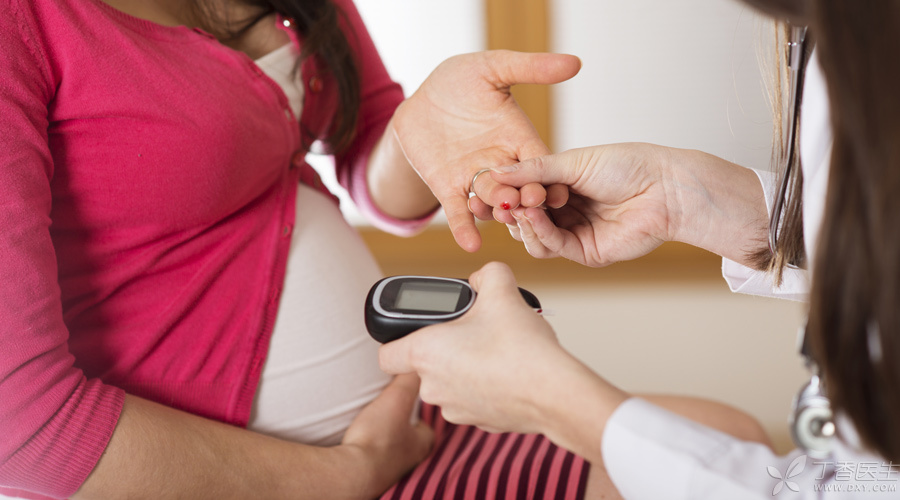
Pregnancy is a major event in a woman’s life.
Some expectant mothers, before upgrading to mothers, found that their blood sugar also rose, and were finally diagnosed as gestational diabetes mellitus by doctors and became a “sugar mother”.
How Judges Gestational Diabetes Mellitus?
If you suffer from gestational diabetes, do you need to pay attention to what?
Today, Dr. Clove will tell you about gestational diabetes.
Am I [Sugar Mother]?
We say here [sugar mother], that is, patients with gestational diabetes mellitus, is the blood sugar increase that only occurs during pregnancy, excluding pre-pregnancy diabetes mellitus, that is, patients who have diabetes mellitus before pregnancy and after the first pregnancy test.
Whether [sugar mother] and whether she has gestational diabetes mellitus need to be judged by oral glucose tolerance test.
STEP 1 Try to do so
Examination time: 24 ~ 28 weeks of pregnancy or the first prenatal examination after 28 weeks.
Examination method: should eat normally 3 days before the test, at least 8 hours after the test day on an empty stomach. The doctor will draw blood for the first time when the expectant mother is fasting, and then let the expectant mother drink 300 milliliters of sugar water. Starting from the first mouthful of sugar water, blood is drawn in the first hour and the second hour respectively. After drawing blood for 3 times, the examination is completed.
Note:
- Not because they are afraid of high blood sugar, Deliberately eat less before the test. Three days before the test, The daily intake of carbohydrates should not be less than 150 grams, which translates to 4 ounces of rice or flour. The sugar water should be drunk in 5 minutes. Don’t exercise too much during the examination, don’t eat anything except sugar water, drink a small amount of plain boiled water, and don’t smoke. After the experiment is completed, you can eat as usual.
2. The result is this way
Combined with oral glucose tolerance test, the diagnostic criteria for gestational diabetes mellitus are:
- Fasting blood glucose < 5.1 mmol/L 1 hour postprandial < 10.0 mmol/L 2 hours postprandial < 8.5 mmol/L
Gestational diabetes can be diagnosed as long as any one of the three results meets or exceeds the corresponding standard.
[Sugar Mother], Self-monitoring
It is very important to make sure that you are the [sugar mothers] of gestational diabetes mellitus. In order to know the progress of the disease in time and ensure the health of yourself and the baby in your belly, it is very important to do a good job of self-monitoring.
1. Blood glucose monitoring
You can use the blood glucose meter to check the blood glucose level at the tip of your finger. Different situations of [sugar mother] need to be monitored at different time points.
- Blood sugar at 7 points per day: newly diagnosed hyperglycemic pregnant women, poor blood sugar control, and [sugar mothers] treated with insulin during pregnancy should monitor blood sugar at 7 points per day, including blood sugar at half an hour before three meals, 2 hours after three meals and at night; Measure blood sugar at 7 points once a week: For [sugar mothers] who are treated with insulin and have stable blood sugar control, they should monitor blood sugar at 7 points at least one day a week, including blood sugar at half an hour before three meals, 2 hours after three meals and at night, and adjust insulin dosage in time according to blood sugar monitoring results; Measure blood sugar at 4 points once a week: For [sugar mothers] who do not need insulin therapy, it is recommended to monitor blood sugar at least once a week for the whole day during follow-up, including 4 times on an empty stomach and 2 hours after three meals.
[Sugar Mothers] Attention Should Be Paid When Measuring Blood Glucose:
- Correct use and regular correction of blood glucose meter to ensure the accuracy of results; Make detailed blood sugar records, and when necessary, record the specific food and quantity eaten for each meal, so as to facilitate doctors to guide diet or adjust insulin dose according to the results; Blood sugar 2 hours after a meal is 2 hours from the first bite of rice, not from the end of the meal. In addition, because positive urine sugar during pregnancy does not really reflect the blood sugar level, the blood sugar situation cannot be judged solely according to urine sugar.
2. Urine ketone body monitoring
Urine ketone body is helpful for timely detection of eating too little, insufficient carbohydrate or energy intake, and can detect diabetic ketoacidosis at an early stage and deal with it in time.
If expectant mothers suffer from unexplained nausea, vomiting, fatigue and other discomfort, or blood sugar control is not ideal, they should go to the hospital to check urine ketone body in time.

[Sugar Mother], how much blood sugar is [safe]?
As mild intrauterine hyperglycemia can have adverse effects on babies, the blood sugar control for gestational diabetes mellitus is also stricter than the general situation.
On the premise of avoiding hypoglycemia, blood sugar should generally be controlled within the following range as far as possible:
- Pre-meal (or fasting) blood sugar ≤ 5.3 mmol/L, 2 hours after meal blood sugar ≤ 6.7 mmol/L, night blood sugar ≥ 3.3 mmol/L
If the blood sugar during pregnancy still fails to meet this standard after diet and exercise therapy, then it is necessary to consider adding insulin to control blood sugar.
In short, for the sake of the health of oneself and the baby, it is very important to ensure smooth delivery, screen gestational diabetes mellitus on time and reasonably control blood sugar during pregnancy.
[Sugar Mothers] with gestational diabetes need not worry too much either. As long as they cooperate with the doctor’s treatment, they can control their blood sugar and will not cause adverse effects on themselves or their babies.
Copyright of Clove Garden. No reprinting is allowed without permission.
